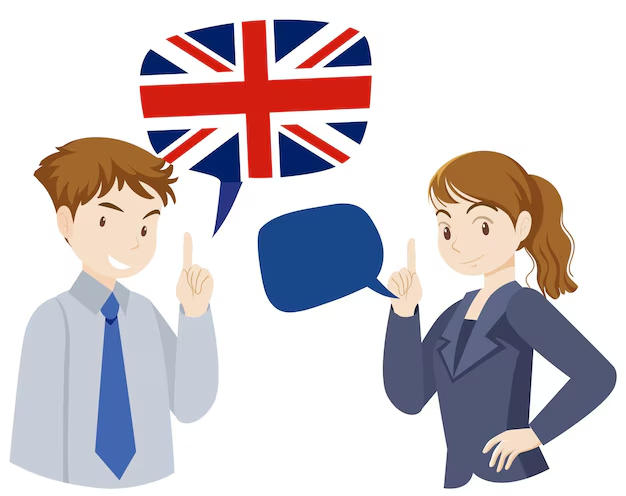English Dialogues About the Impact of Streaming Services
Alex: Oh, that’s a huge topic! Streaming services have really turned the media world on its head. It’s like we’re witnessing a revolution. What do you find most interesting about it?
Jamie: I’m curious about how they’re affecting traditional TV and movies. Is it a good thing or a bad thing?
Alex: Great question. It’s a bit of both, actually. On one hand, streaming services like Netflix, Hulu, and Disney+ have made it easier for people to access a vast array of content. You can binge-watch your favorite shows or discover new ones at any time.
Jamie: True! I love that I can watch an entire season in one go. But does that mean traditional TV is dying out?
Alex: Not exactly. Traditional TV is adapting. It’s not as dominant as it used to be, but it’s far from dead. Many people still enjoy the experience of watching live TV, especially for sports events or news. But the way we consume media is definitely changing.
Jamie: So, what’s driving this change? Is it just convenience?
Alex: Convenience is a big part of it, but there’s also the appeal of on-demand content. Streaming platforms offer a huge library of shows and movies that you can access anytime. Plus, they often provide original content that you can’t get anywhere else.
Jamie: Like those exclusive shows and movies that everyone talks about!
Alex: Exactly. Shows like Stranger Things or The Mandalorian have become cultural phenomena because they’re only available on those platforms. It’s a way for these companies to create buzz and draw in subscribers.
Jamie: That’s a smart strategy. But how do traditional media companies respond to this?
Alex: They’re getting creative. Many traditional networks and studios are launching their own streaming services to stay relevant. Think HBO Max, Paramount+, or Peacock. They’re trying to capture some of that streaming magic.
Jamie: And are these new services successful?
Alex: Some are doing well, but it’s a crowded market. Success often depends on having a unique value proposition—like exclusive content, a strong brand, or a good user experience.
Jamie: I see. So it’s not just about having content, but also how you deliver it.
Alex: Precisely. It’s about the whole package—content, accessibility, user experience, and even pricing. Streaming services have made media consumption more flexible and personalized, which is something traditional media had to catch up on.
Jamie: It sounds like streaming services have set a new standard for media.
Alex: They have, and they’re still evolving. The future of media is likely to be a blend of traditional and digital formats. People will still tune into TV, but they’ll also enjoy the freedom and variety that streaming offers.
Jamie: That’s a cool way to look at it. So, there’s room for both in the media landscape?
Alex: Absolutely. The key is adaptation and innovation. Traditional media isn’t going away, but it’s adapting to meet new demands and trends.
Jamie: This has been really eye-opening. Thanks for breaking it down for me, Alex!
Alex: Anytime, Jamie! Media is such a dynamic field—there’s always something new to explore.
Jamie: I think I’m going to explore how different streaming platforms market their exclusive content. This is fascinating!
Alex: That sounds like a great idea. There’s a lot of strategy behind those marketing moves. Have fun diving into it!
English Dialogues About the Impact of Streaming Services
Sam: Hey Jordan, I’ve been really fascinated by how streaming services are changing the media industry. Can you give me some insights from your perspective?
Jordan: Absolutely, Sam! It’s a topic I’m passionate about. Streaming services have definitely been a game-changer. What specifically are you curious about?
Sam: I’m interested in how they’re affecting the way content is made and consumed. Are we seeing big changes in production and viewing habits?
Jordan: Oh, definitely. Let’s start with production. In the past, creating a TV show or movie was a big gamble. You had to pitch to networks or studios, and there were many hurdles to get a project off the ground.
Sam: Right, and it must have been tough to get those green lights!
Jordan: Exactly. But streaming services have shifted that dynamic. Now, platforms like Netflix, Amazon Prime Video, and Apple TV+ are actively seeking out new content and original ideas. They’re willing to invest in innovative projects that might have been considered too risky for traditional networks.
Sam: That sounds like a dream for creators. Does it mean there are more opportunities for new voices in the industry?
Jordan: Yes, it does! Streaming services have democratized content creation to some extent. Independent filmmakers and lesser-known creators now have a chance to reach a global audience. It’s exciting to see fresh perspectives and unique stories coming to the forefront.
Sam: I’ve noticed a lot of international content on these platforms too. How does that fit into the picture?
Jordan: That’s another fantastic aspect of streaming. International content has become more accessible, and people are more open to exploring shows and movies from different cultures. It’s a way for global stories to find their audience without the traditional barriers.
Sam: That’s so true. I’ve watched some incredible foreign films and series because they popped up on my streaming recommendations.
Jordan: And that’s the power of algorithms and personalized recommendations. Streaming platforms use data to suggest content based on your preferences, which helps you discover things you might not have come across otherwise.
Sam: Speaking of recommendations, do you think traditional media is trying to compete with this personalization?
Jordan: They are, but it’s a bit of a struggle. Traditional media still relies heavily on scheduled programming and broad marketing strategies. But there’s definitely an effort to adapt, like the development of on-demand services by cable companies and networks.
Sam: Do you think these traditional networks can keep up with the pace of streaming innovation?
Jordan: It’s a tough race. Streaming services are moving quickly, experimenting with new formats, and constantly evolving. Traditional networks are trying to catch up, but they’re often bogged down by legacy systems and slower decision-making processes.
Sam: What about the audience’s role in this? How are viewers shaping the future of media?
Jordan: Viewers are the driving force behind these changes. Their preferences and behaviors dictate what content gets made and how it’s distributed. The demand for on-demand, binge-worthy content is a direct response to what audiences want.
Sam: So, it’s all about understanding and meeting the audience’s needs.
Jordan: Absolutely. Streaming services have a direct line to the audience’s desires, thanks to their data and feedback mechanisms. It’s a two-way street where audience engagement drives content creation.
Sam: That’s really fascinating. I guess the future of media is all about innovation and adaptation.
Jordan: You got it, Sam. It’s a dynamic field with endless possibilities. The key for anyone in the industry is to stay curious, adaptable, and open to new ideas.
Sam: Thanks for the insights, Jordan! I’m even more excited about diving into the media world now.
Jordan: Glad to hear it! The media landscape is evolving fast, and there’s so much to explore. Enjoy the journey!
Sam: I’m thinking of looking into how streaming platforms use data to influence content creation. It sounds like a cool topic for a project!
Jordan: That’s a fantastic idea. The intersection of data and creativity is where a lot of the magic happens in streaming media.






